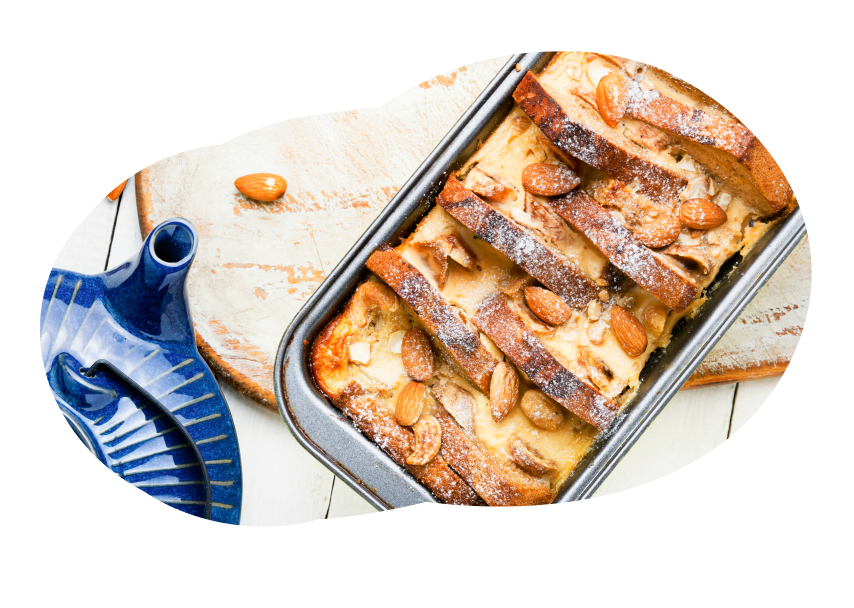
Sometimes the best things in life are the simplest. Pain Perdu, often called French toast in America, is one example of that. In Europe, when a humble slice of stale bread is dipped in a wet mixture and fried in French butter, it becomes something that has impressed kings and endured for centuries.
The dish is so versatile that it can be served any time of day. One thing that shouldn’t vary is the use of European butter from France to cook and crown it. Higher-fat butter adds richness and lingering flavor that is impossible to duplicate with substitutes.
The origins on Pain Perdu can be traced to Roman times, when cooks would take their dense bread, dip it in a mixture of milk and honey, and fry it to make it more palatable. Taillevent, who wrote the influential early French cookbook “Le Viandier,” included a recipe for a similar fried bread dish. Louis XVI is among Pain Perdu’s many fans.
There are several nuances to maximizing the dish’s appeal. Just like using French butter as a flavor booster, it’s also critical to use bread that is at least one day old, said Chicago-based baker Romain Dufour. Dry bread soaks up more liquid and makes for a tastier, most custardy dish. In addition, Pain Perdu means “lost bread” in French. The whole concept is to keep the bread from being wasted, a lifesaving proposition in the Middle Ages and one that jives with current efforts to reduce food waste. “Please, let’s keep the origin of the recipe and be more sustainable,” he said. Dufour likes to use thick slices of sourdough French baguette, however it’s common to use brioche or challah for Pain Perdu. Chef Joris Barbaray of Bergerac in Portland, Oregon, will sometimes use a Pullman loaf because the semolina flour gives it some bite.

For the milk, many chefs use whole milk, cream or a mixture of the two. For the eggs, use the yolks only when possible; it will give the dish a quiche-like texture, Barbaray said. Both sugar and honey are traditional sweeteners for the soaking liquid. A little vanilla or rum can add additional flavor.
Once the bread has been soaked, it should be fried in French butter until crispy and golden. This is a dish where the higher fat content of French butter really makes a difference, said Barbaray. French butter has at least 82% butterfat and is made with real cream, while other butters are around 80% milkfat and sometimes contain powdered milk. “You want the protein from the cream to cook down because when it cooks down, that’s where you get this nutty flavor,” he said. Only higher fat content butter provides this rich, round, savory flavor and a gourmand experience.
Dufour agrees. He recently cooked the same dish with French and American butter. “The flavor of both was really good, but with the French butter, the flavor stayed in your mouth longer, so you could appreciate it longer,” he said.
French butter also provides Pain Perdu with its signature golden color. However, it’s critical not to overheat it or you’ll end up with an unappealing blackened mess. Carefully monitor the temperature while cooking to ensure you get the proper color and delicious caramelized crust that higher-fat French butter provides.
Patrick Quillec, owner of Café Provence and Verbena in Kansas City, grew up in Brittany, France, where they put butter on everything. He remembers his mother putting a little pat of the region’s salted butter on top of the warm bread and letting it slowly melt. Although he’s tried other butters, they don’t hold a candle to the ones from France. “They’re not as rich. They don’t have that smooth taste on your tongue.”

Pain Perdu for breakfast is traditionally topped with honey, fresh jam or a few raisins soaked in rum in addition to salted butter. Quillec has served it with plum jam and crème fraîche to rave reviews. Dufour likes the dish with whipped cream and fresh fruit.
Though Pain Perdu is often served as a breakfast or brunch item, it can double as an afternoon snack. If you want leftover slices, Barbaray recommends baking slices on a tray rather than frying them to keep them from getting too soggy. At another restaurant, Pain Perdu was turned into a dessert with the addition of Cognac-soaked cherries and ice cream. Salted European butter from France is the natural choice in these dishes as well. “Like with chocolate mousse, a little salt brings out the flavor of the other ingredients,” Quillec said.
this article originally appeared in the april 2023 issue of pastry arts
magazine.